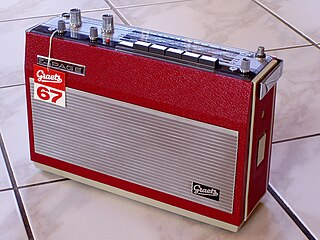See also
- Plus and minus signs, mathematical symbols
- Radical 33, a Chinese radical with the symbol "士"
- 士 (disambiguation), other uses of the symbol "士"
Plus–minus, ±, +/−, or variants may refer to:
Stop may refer to:
Ensemble may refer to:
Negative may refer to:
The plus sign and the minus sign are mathematical symbols used to denote positive and negative functions, respectively. In addition, + represents the operation of addition, which results in a sum, while − represents subtraction, resulting in a difference. Their use has been extended to many other meanings, more or less analogous. Plus and minus are Latin terms meaning "more" and "less", respectively.
PM or pm is an abbreviation for Latin post meridiem, meaning "after midday" in the 12-hour clock.
The division sign is a mathematical symbol consisting of a short horizontal line with a dot above and another dot below, used in Anglophone countries to indicate the operation of division. This usage, though widespread in some countries, is not universal and the symbol has a different meaning in other countries. Its use to denote division is not recommended in the ISO 80000-2 standard for mathematical notation.
The plus–minus sign or plus-or-minus sign and the complementary minus-or-plus sign are symbols with broadly similar multiple meanings.
IM or Im may refer to:

Rafael Bombelli was an Italian mathematician. Born in Bologna, he is the author of a treatise on algebra and is a central figure in the understanding of imaginary numbers.
The hyphen-minus symbol - is the form of hyphen most commonly used in digital documents. On most keyboards, it is the only character that resembles a minus sign or a dash so it is also used for these. The name hyphen-minus derives from the original ASCII standard, where it was called hyphen (minus). The character is referred to as a hyphen, a minus sign, or a dash according to the context where it is being used.
A symbol is something that represents an idea, a process, or a physical entity.
In mathematics, a basic algebraic operation is any one of the common operations of elementary algebra, which include addition, subtraction, multiplication, division, raising to a whole number power, and taking roots. These operations may be performed on numbers, in which case they are often called arithmetic operations. They may also be performed, in a similar way, on variables, algebraic expressions, and more generally, on elements of algebraic structures, such as groups and fields. An algebraic operation may also be defined more generally as a function from a Cartesian power of a given set to the same set.
Symbolic may refer to:
Mathematical Operators is a Unicode block containing characters for mathematical, logical, and set notation.
士 is Kangxi radical 33.
Plus or PLUS may refer to:
Minus refers to the minus sign, a mathematical symbol.

Kurzwellen, for six players with shortwave radio receivers and live electronics, is a composition by Karlheinz Stockhausen, written in 1968. It is Number 25 in the catalog of the composer's works.

Pole (Poles), for two performers with shortwave radio receivers and a sound projectionist, is a composition by Karlheinz Stockhausen, written in 1970. It is Number 30 in the catalogue of the composer's works.

Plus-Minus, 2 × 7 pages for realisation, is a composition for one or several performers by Karlheinz Stockhausen, first written in 1963 and redrafted in 1974. It is Nr. 14 in the composer's catalogue of works, and has a variable performing length that depends on the version worked out from the given materials. The score is dedicated to Mary Bauermeister.